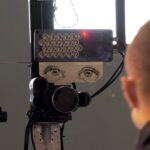Recent advancements in thermal infrared (IR) facial recognition technology offer a potential solution to some of the limitations faced by traditional visible-light systems. In a study published in the International Journal of Information and Communication Technology, researchers Naser Zaeri from the Arab Open University and Rusul R. Qasim from Kuwait Technical College explore how IR imaging can bypass challenges such as ambient lighting conditions and variations in skin tone that affect visible-light facial recognition.

Thermal imaging captures the unique heat patterns emitted by a person’s face, which are largely determined by underlying facial vasculature and tissue structures. These patterns remain consistent regardless of lighting or skin tone, making thermal IR a potentially more reliable method for biometric identification. However, challenges such as image degradation due to noise, blurring, and temperature drift, as well as issues related to facial expression and pose, have hindered the widespread adoption of thermal recognition.
To address these challenges, the researchers demonstrated the effectiveness of Convolutional Neural Networks (CNNs), particularly the ResNet-50 architecture, in improving the recognition of degraded thermal images. Their work, which involved evaluating the performance of CNNs on a database of 7,500 thermal images, showed promising results in achieving better recognition accuracy across various scenarios.
Some active companies in the biometrics industry have already been looking to the advantages of IR imaging. Suprema, for example, uses Near Infrared (NIR) technology in its facial recognition systems, with an approach that combines traditional color scans with NIR imaging to create a robust facial recognition system that is less susceptible to spoofing and environmental changes.
Xiaomi, meanwhile, has integrated IR facial recognition technology in its flagship smartphones, enabling the creation of 3D models of a user’s face, allowing for more accurate and secure biometric authentication, even under varying lighting conditions.
Source: Tech Xplore
–
August 15, 2024 – by Cass Kennedy








Follow Us